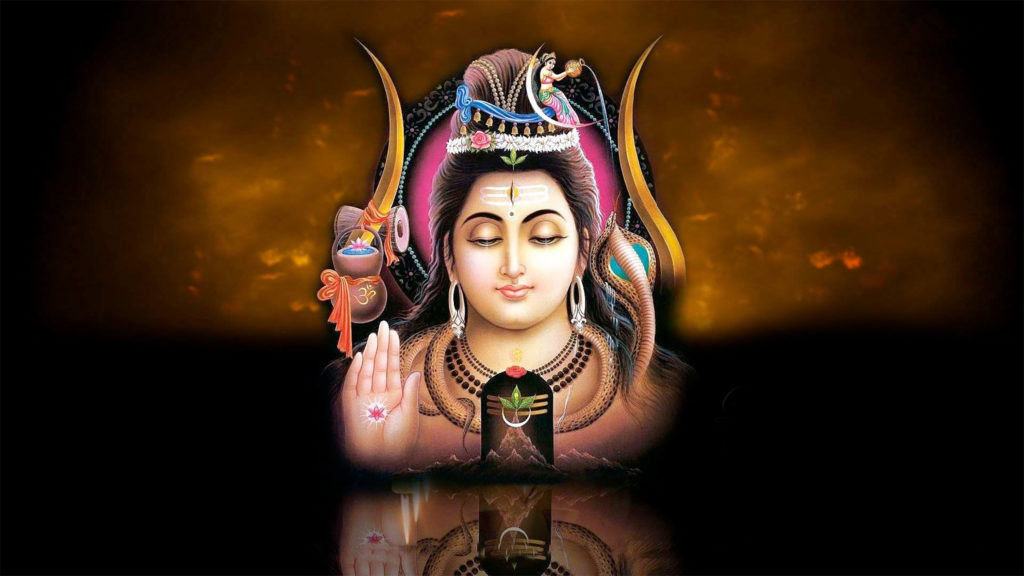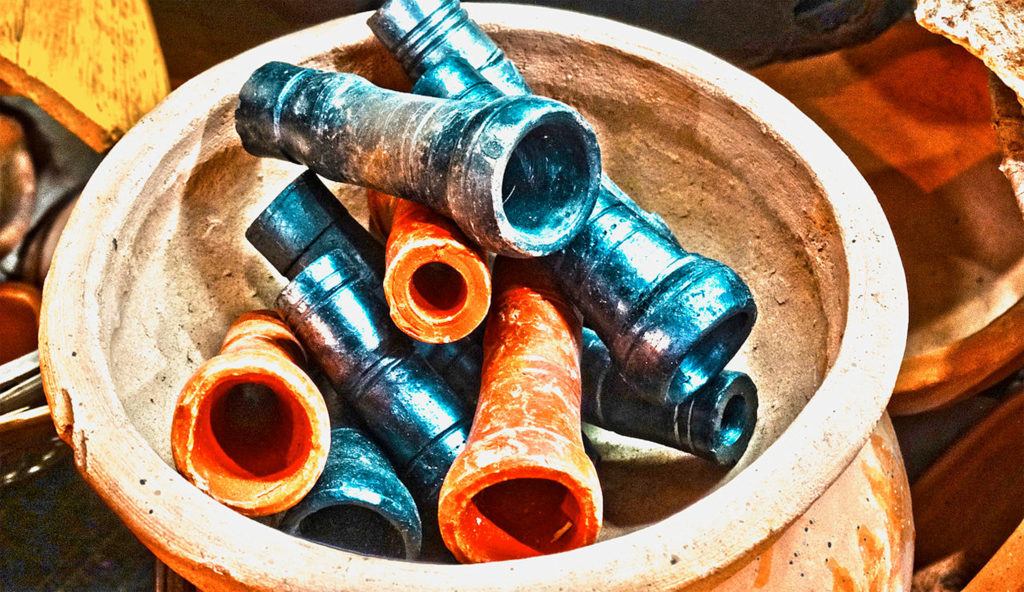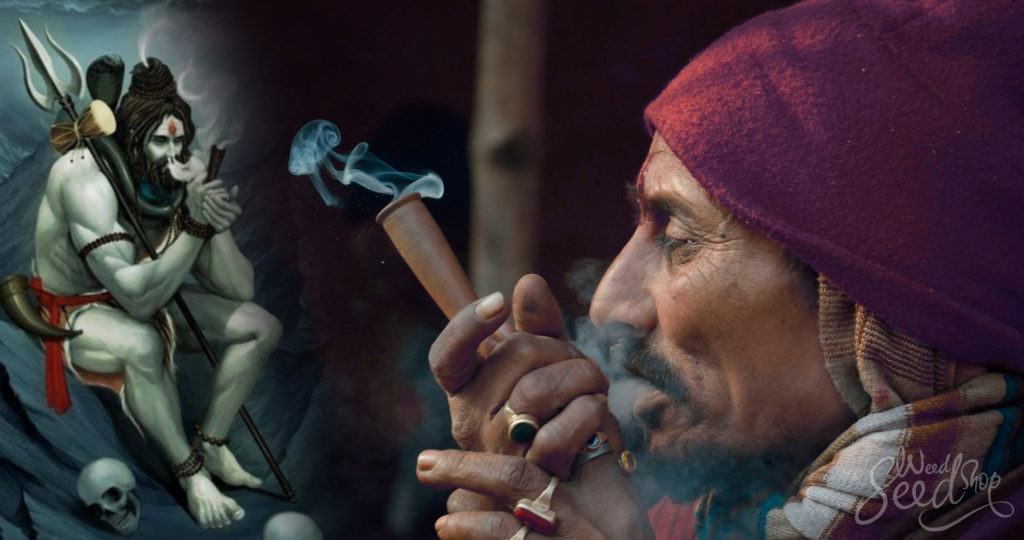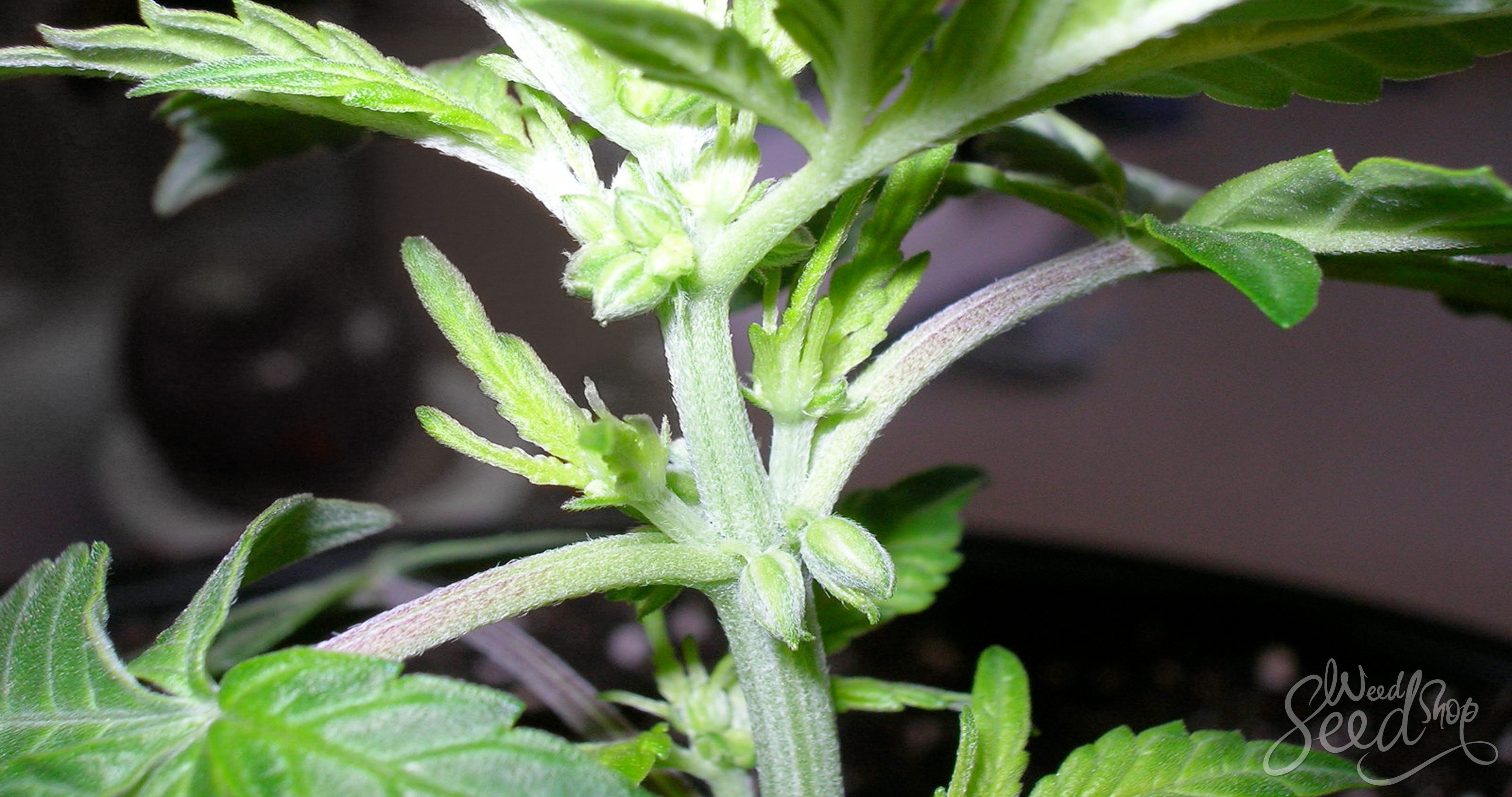India has long been a place to explore culture and spirituality. It happens that weed plays a huge role in the history of this country. In this personal story, you can get a picture of what it’s like to be a traveling stoner in India. From mountains to temples, ganja is one of the things that makes India, India.
“Boom Bolenath” is the holy mantra chanted before smoking a chillum in India. It is a call for the guru, a call to sanctify Shiva and let him know that the chillum is about to be smoked. In India, the ancient and holy way to smoke cannabis is still celebrated. Just like anything in India, having a ganja experience is like taking a walk through its history.
A taste of Indian Shiva, in what is arguably the place where ganja started, is a smoking experience like no other. From the cannabis fields of the Himalayas all the way to the temples in the desert of Rajasthan, this Indian experience was a walk through the cannabis culture of the East. They say that in India, anything is possible. That sentiment, along with the love I have for this plant, took me to some of the most incredible places I have ever been to and shared some of the most unique experiences of my life. In this piece, I’d like to share some of these experiences with you.
Scoring ganja in Delhi
After traveling for some time, you begin to develop a system when looking for weed in a new country or city. There are usually some threads between places, but in India none of that applies. Stepping out into Delhi just to search for ganja for the first time was an adventure in itself, and as most traveling stoners know, sometimes looking for it is most of the fun.
The thing about India is that no one will ever say “I don’t know”. They will help you wander around and ask for it, and turn it into something of a blind leading the blind situation, until you have a team of Indians helping you search for weed. My situation was just like this.
After asking one of the tuk-tuk drivers if he could help me find ganja or charas (the Indian handmade hashish) and being delighted with a “Yes! Ganja!”, I jumped in the back. He told me I should pay him 100 rupees (about $1) and that each bag of weed would cost the same. I delightfully agreed, thinking he was going to take me to the place where I could buy ganja.
This was just one of the first of many situations where I learned that India is a place to let go of expectations. We drove for about ten minutes, winding into the narrower and narrower alleyways of Delhi, while he continued to yell “Ganja, ganja?” out the window. Every time, someone would point in a direction and yell some words in Hindi, and he would drive that way and ask another person. Finally we stopped in front of what could have been a house… it was hard to tell. I also get the feeling we were in a less wealthy part of Delhi by then. A youngster, probably no older than 18, came out and we swapped paper for grass. The driver asked me to roll a joint while he started heading back to my hostel, and we smoked on the drive together.
When they say anything is possible in India, they mean it. In a country of 1.25 billion, even if you don’t know where to get something or how to do something, there is someone within a 5-kilometer radius that does. Actually, I’ve never found weed so easily in a country. It was the smoothest “drug deal” I have ever been a part of and even if I did get ripped off, I was pretty happy with the price.

Learning to prepare and smoke a chillum
The Indian smoking experience is incomplete without at least once smoking a chillum. Actually, it’s surprising if anybody leaves India without smoking many of them, because it seems to be one of the cultural things to offer someone as a loving gesture. Actually, a chillum is something that is usually shared between Babas, who are the spiritual leaders within the temples. It’s rare to find a Baba with a joint in his hand, although you can find them holding beedie joints, which are something like teeny weeny little blunts. Traditionally, the chillum is only smoked with charas and tobacco mixed together, but there are many people who like to throw ganja in the mix, too.
The first time I smoked a chillum with a Baba was in Madhya Pradesh, the central and biggest state of India. I was on the back of a motorbike with a friend, and as we were riding past a temple, we caught the smell of ganja. We looked at each other and telepathically agreed that we should go back there with the small piece of hash we had and ask the Babajis if we could smoke a chillum with them. The temple was tiny, barely built, but warm and cosy on the inside. They offered me chai and said they would love to smoke a chillum with us.
Thank Krishna my friend was Indian and could do most of the translation for me. It is usually the Baba who lights the chillum, but in the event a guest is there, he will usually offer the honour to them. You can imagine how my heart fell down to my stomach when he offered me the chillum. I looked at my friend, who also knew that I had probably never smoked a chillum before and had no idea how. He gave me a very quick instructional. As the Baba lit the chillum for me, he chanted his Bolenath Shiva mantra.
How do you smoke a chillum?
Smoking a chillum is nothing like smoking a joint. It’s like smoking a bong whose bowl is the size of a $1 coin. It has to be inhaled straight down into the lungs, unlike a joint where you can hold the smoke in your mouth and then inhale. Naturally, I coughed my lungs out while everybody in the temple giggled at my attempt. The hit was so strong, I broke out into the sweats, put my hands on my knees and had to keep breathing deeply to recover. The chillum is passed around the circle until it is finished. It is amazing, watching the power of this chillum take over each person, one at a time, leaving the temple silent for at least a few minutes while everybody sat with their journeys.
The preparation for a chillum is something like preparing a mix, but with a little added finesse. Not only is the mix important for how much goes inside the chillum, but there is a perfect texture you have to get out of the mix before filling up the pipe. I saw the Baba put the charas and tobacco in his hand and massage it with his thumb. Periodically, he would add just one or two drops of water, and continue massaging. In the end, it was like a dry paste, and he packed this tightly into the chillum. In fact, the whole process of preparing the chillum can take up to 20 minutes.
Smoking the chillum in the temple felt a lot like a ceremony. Care and attention was paid to what we were smoking, not to mention prayers over the material being smoked as well. Even though the language barrier meant there was virtually no communication, they begged me to stay and offered me chai and food. As you can imagine, being in a smoking circle that feels like it came from millennia ago was a cultural explosion for me. It was about connecting with a cannabis culture that was more religious than scientific, and it opened my heart to the many different faces of ganja in India.

In the Himalayas, where the ganja grows wild
The next step was to start heading North to the Himalayas, where the ganja grows wild. In Himachal Pradesh, the Himalayan state of India, there are whole villages dedicated to growing cannabis. In November, these hills get covered in snow, so the final season to make hash is towards the end of October (which is when I went). By the way, just because it hasn’t started snowing yet, doesn’t mean it isn’t freezing up there in October. These villages aren’t places you can reach by road either – they are reachable only by foot. The first leg of the journey is a 6 km steep uphill climb to the village of Malana. The entire way up, ganja grows wild on the side of the path, on the hills, between rocks and just about everywhere. For a cannabis lover, this part of the world is a feast for the senses.
Malana is famous for its “cream”, and there are coffee shops and dispensaries all over the world that charge a lot of money for Malana cream. For those that aren’t familiar, this is some of the world’s finest hash, hand rubbed by the village people of Malana. They aren’t just regular village people either. They are “pure” people, and anybody coming from outside is “impure”. As a result, they don’t touch people coming from outside Malana, or even touch an object at the same time. They put water bottles at the front of their shops, where you leave the money.
Up in Malana, they call cannabis God’s gift. To them, it isn’t just a plant that brings them closer to God, but it completely financially supports them. Throughout the summer and spring, they grow, harvest and make cream. This fully supports them financially to stay indoors and be warm during the winter months, where it is almost impossible to do anything. After meeting a family on the outskirts of Malana who were more than happy to deal with an impure stranger, I finally got my hands on some Malana cream.
The entire purpose of this journey was to smoke this material, fresh from the Himalayas. After smoking, and enjoying being doubly high (stoned and thousands of metres above sea level in the Himalayas), the man who sold me this cream invited me to stay with his family. I soon came to learn that they were happy owners of a small farm about 2 hour hike away from Malana. The following morning we took off at 7am to get to work.
The deeper into the Himalayas you go, the more sketchy the paths become, the steeper everything gets, and the more the feeling that this is way more than you bargained for increases. I followed the man’s wife and two daughters, basically running to catch up with them while they zoomed off into the mountain. After a couple of hours we reached a pass, and as I began to see over it, the view swallowed me. Mountains, full of ganja, as far as your eye can see. They are less like plants and more like trees there, 20 and 30 feet tall. The smell was overwhelming.
Actually, I couldn’t believe I was standing on a “small” farm. I was taking in the view when the woman in charge came with a scythe, carrying a huge bundle of plants on her back. She started a fire for us to warm our hands on, and when we were ready, her daughters started teaching me to rub the finest Malana cream.
This must be one of the last places in the world where hash is still made by hand. After picking off the leaves, the buds should be gently and slowly rubbed between the hands. The slower the rub, the less seeds and leaves that make it into the final product, meaning a finer cream. The plants are so resinous, it only takes a few minutes before your hands are starting to get very sticky and turning very green. Within an hour, black resin began forming on the thumb mount of my hand and under my fingers. I thought I was doing a fine job, until I realized what I had produced in four hours was about the quarter of the size of what these two young girls had on their palms. They let me keep my small ball of hash, which was only about a few grams in weight.
It was something special to have made my own hash out of Himalayan kush and to be smoking it right there, next to the plants that made it. What is special about this weed is that it does not belong to a strain. These plants grow naturally in the Himalayas, and belong to a group of cannabis plants called land races. They have never been tampered with. And from them comes some of the finest, stickiest hash. I watched the sun go down over the Himalayas with a joint in my hand and slept with a feeling of accomplishment.
The next morning on the way down, I was flagged by the police, as the tourists usually are. Although there are never police in those mountains (I suppose they are probably too lazy to make the two day climb), they are always waiting somewhere at the bottom to strike. Luckily for females who are carrying a little something, it’s completely hands off unless there is a female officer there, which is unlikely anyway. I remember shaking hands with the police officer with a hand covered in hash. It took me days to wash it off.
The social attitude towards cannabis in India
For a country where the use and export of cannabis is so enormous, it is surprisingly still somewhat socially unacceptable to use. While there are communities who celebrate this plant, whether it is for business or for religious purposes, there are still many Indians who discourage its use. It was easy to be smoking with young, and even old Indians, but it was never something that was to be made public. In fact, most of my friends wanted it to be secretive, hidden from their friends and family members – even in circumstances where I had also smoked with those friends and family members.
Somehow, the social implications of being in a ganja circle are huge in India. It affects many things, including being able to get a job or even find a suitable husband or wife. I only ever very rarely had the opportunity to smoke with a female, although I know there are many out there – they are probably just hiding it.
To sum up the story…
Indian Shiva isn’t just something to smoke. In fact, the leaves and flowers of this magical plant were traditionally an offering to Shiva, rather than something to be consumed. It is a complete experience to use ganja in India. It was a way to connect with many kinds of people that I would never otherwise have met, even those who wouldn’t make physical contact. In this way, weed is something like a culture that brings many people together.
Well, it may sound crazy, but weed was the avenue through which I learned many things about Indian culture, history and even geography. There were times on the train where I spotted people between carriages smoking a chillum. If I didn’t have anything to smoke, I would always ask. And because anything is possible in India, even when you have nothing to smoke, you can still smoke. It isn’t custom to turn someone down who asks for a smoke. Sometimes this was the beginning of a long and beautiful conversation about Hinduism, about India, about traveling, music, romance – family.
All kinds of people smoke weed (even if they lie about it), and that’s the truth. Through this truth I had the chance to hang out with homeless people, those that are rich, with spiritual leaders, with the old and young, with musicians and street vendors and ear cleaners and hostel owners and even my bus drivers. Despite the many different kinds of religions, cultures, languages and cuisines in India, there is a thread that makes it all Indian. That thread is arguably cannabis, although I won’t go ahead and say so because it might upset some of my babajis and matajis.








This was a pleasure to read, felt like I could see the entire journey from the author’s eyes.